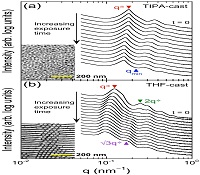
Richard J. Spontak
North Carolina State University, USA
Title: Morphological development & versatile properties of charged thermoplastic elastomers
Biography
Biography: Richard J. Spontak
Abstract
Block copolymers continue to capture the attention of the academic and industrial worlds due to their fascinating ability to self-assemble into a wide variety of "soft" nanostructures that are ideally suited for a broad range of diverse nanotechnologies. The development of thermoplastic elastomers (TPEs) also endows these materials with elastic network-forming characteristics In the presence of a midblock-selective solvent, these materials form TPE gels (TPEGs) with remarkable mechanical properties. While most TPEs are inherently nonpolar, targeted functionalization can permit these materials to be used in the presence of polar environments. Sulfonation of TPEs, for example, yields materials that possess amphiphilic properties for new applications. We have recently demonstrated that these materials are competitive candidates for electroresponsive media, amphoteric gas-separation membranes and organic photovoltaics. Unfortunately, the inherently high thermodynamic incompatibilities and glass transition temperatures of such materials effectively prevent the use of thermal annealing, routinely employed to refine the morphologies of nonionic block copolymers. An alternative athermal approach is required to control morphological development in charged TPEs. This presentation explores the morphological characteristics of midblock-sulfonated TPEs differing in their degree of sulfonation and templated from solvents varying in polarity, followed by several different solvent-vapor processes: annealing, permeation and sorption. Electron microscopy and synchrotron scattering confirm that films prepared from different solvents form nonequilibrium morphologies due to solvent-templated self-assembly and drying. Exposing cast films to the vapor of a polar solvent constitutes an effective post-equilibration protocol. Judicious solvent exposure likewise improves nanostructure orientation. In addition to solvent-related processes, discrete ion-rich microdomains are found to undergo an irreversible phase transformation and become continuous due to hydrothermal treatment, thereby causing these materials to become superabsorbent.

Figure: Time-resolved SAXS profiles and TEM images of charged TPEs templated from different solvents — (a) toluene/isopropanol (TIPA) and (b) tetrahydrofuran (THF) — and subjected to hydrothermal annealing at 25°C.

